Nothing quite seems to encourage human innovation like war.
For just one example of this, we can look at World War I.
WWI, AKA the Great War and “the war to end all wars,” is widely considered the first modern war due to the role that such innovation played. Each side gathered teams of engineers and scientists to help them create fresh new weapons to help them fight.
World War I’s death toll would have been virtually unprecedented anyway, due to the sheer number of countries involved, but the new deadly weapons certainly helped the killing become more efficient.
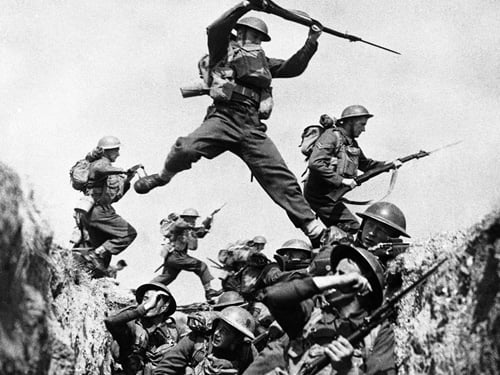
World War I introduced a wide range of new war technologies, from trench warfare to chemical weapons to fighter planes. But we don’t have time for all that, so today I’m going to focus specifically on the guns.
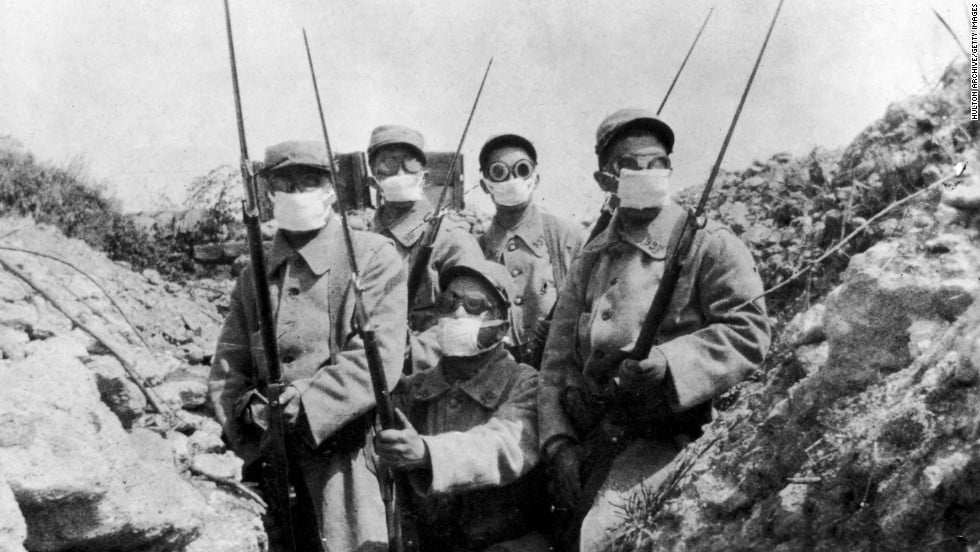
With the number of countries involved in World War I, a huge variety of guns were used. I’m going to talk about a few of the most popular, most significant, and, at least in my opinion, most interesting firearms to make their way to the battlefield.
Let’s dive right in.
Table of Contents
Loading…
Battle Rifles
With trench warfare being so prolific and widespread during World War I, rifles, in particular, saw a huge advancement in technology.
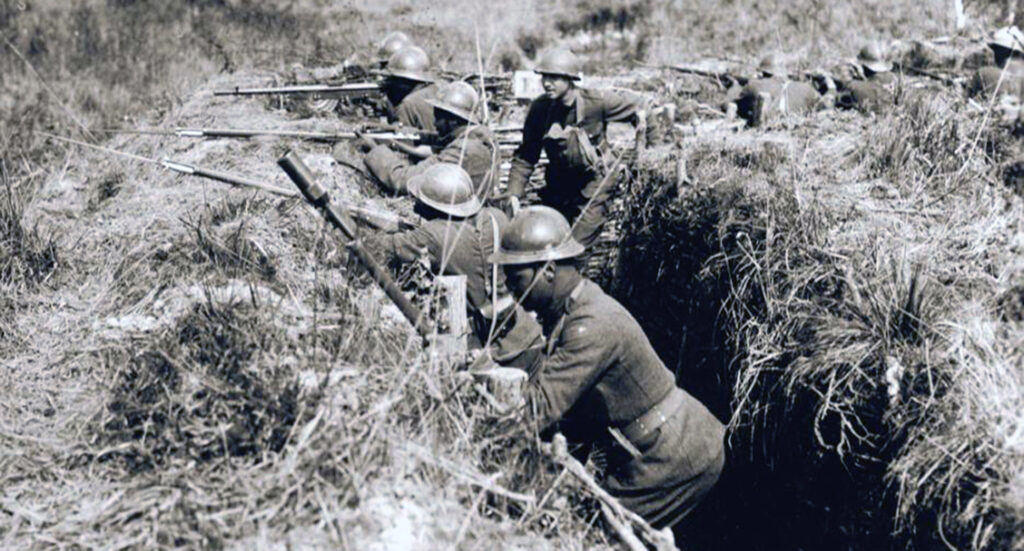
While reading about these next few rifles, remember that while they may not seem like much compared to modern rifles, this technology came only about 50 years after the Civil War.
M1903 Springfield
As the name indicates, the M1903 Springfield was actually adopted by the US military in 1903, about a decade before the start of World War I. Its development was in response to some tragic and, frankly, embarrassing defeats during the Spanish-American War by Spanish troops carrying Mauser Model 1893s.
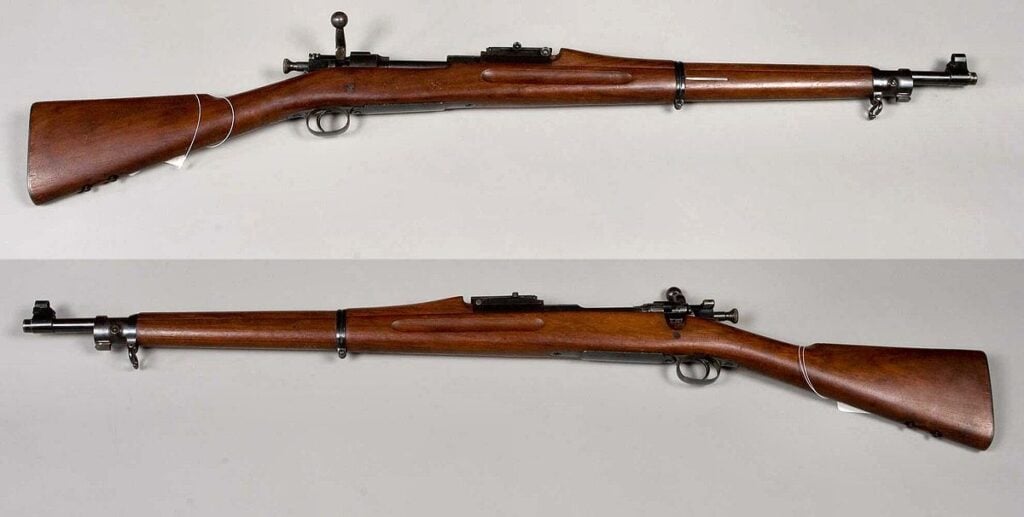
The US’s previous rifle, the Springfield Model 1892–99 Krag–Jørgensen rifle, was promptly binned and the US began to study the Spanish Mausers in order to replicate their success.
What resulted was a reliable short-barrelled bolt action rifle very similar in design to the Mauser. The M1903 had a five-round internal box magazine and could fire off 10 to 15 rounds per minute. It shot .30-06 rounds with an effective range of 900 meters and a max range of 5,000 meters.
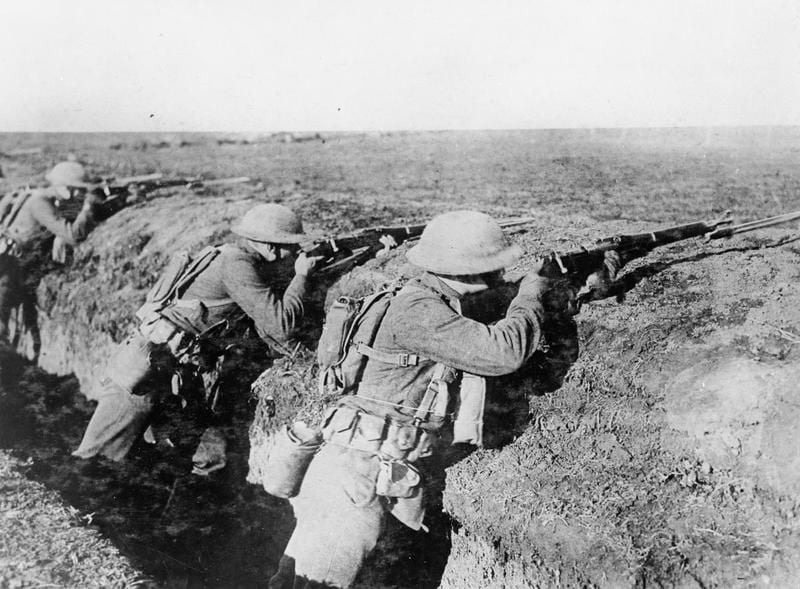
Toward the end of the war, the US Army produced the M1903 Mark I, which was compatible with the Pederson device. This device attached to the rifle to make it capable of semi-automatic fire using .30 caliber pistol cartridges from a 40 round capacity detachable magazine.
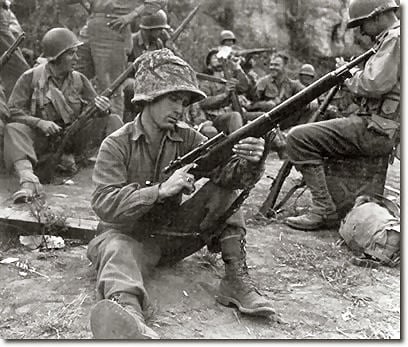
The M1903 would eventually be replaced as the US military’s standard infantry rifle by the M1 Garand in 1936, prior to the start of World War II. However, it continued to be used as a sniper rifle throughout World War II and the Korean War, and even early in the Vietnam War.
Short Magazine Lee–Enfield Mk III
While Americans were using the M1903 Springfield, troops from the British Empire and Commonwealth were using the Lee-Enfield, specifically the Short Magazine Lee-Enfield Mk III, or SMLE Mk III.
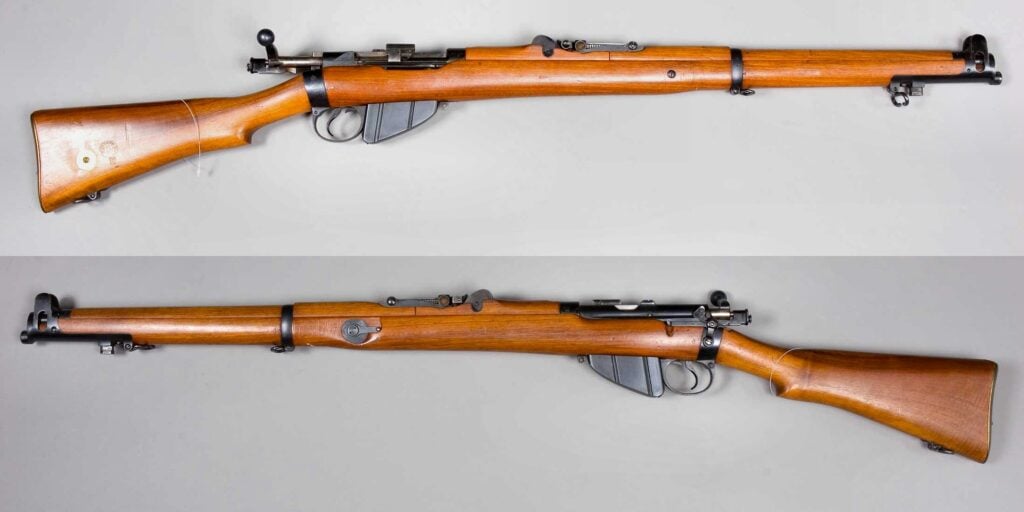
The Lee-Enfield was first adopted by the British Empire in 1895, but the SMLE Mk III version was introduced in 1907. Despite the name, “short” refers to the length of the rifle, not the size of the magazine. Like the M1903 Springfield, the SMLE Mk III had a short barrel. Short barrels made the rifles easier to move and use in narrow trenches.

The SMLE Mk III had an effective range of 500 meters and a max range of 2,700 meters, significantly shorter than the Springfield. However, where the SMLE Mk III really shone was its 10 round removable magazine and 20 to 30 shot per minute rate of fire.
British troops were trained in rapid-fire in order to take advantage of this excellent rate of fire. In fact, German troops reported that they believed the British were using semi-automatic rifles because of their firing speed.
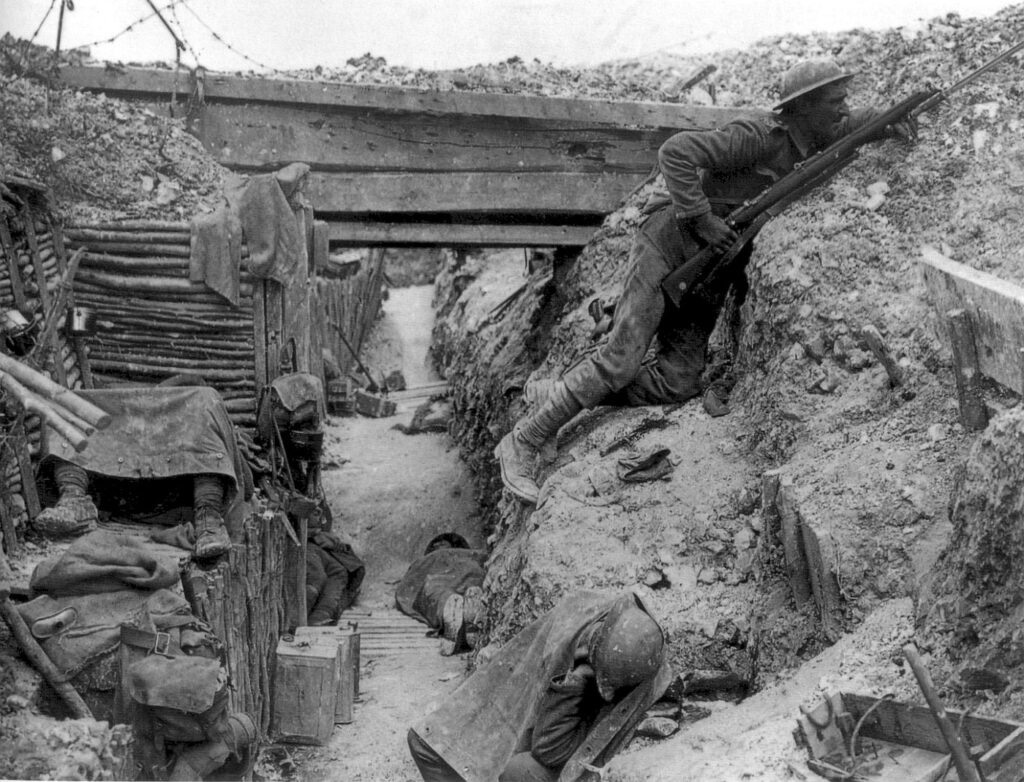
Gewehr 98
German arms manufacturer Mauser is well known for the quality of their bolt action battle rifles, especially during and around this era. Even if you aren’t already familiar with Mauser, you may remember them from those rifles the Spanish were using that prompted the US Army to develop the M1903 Springfield.
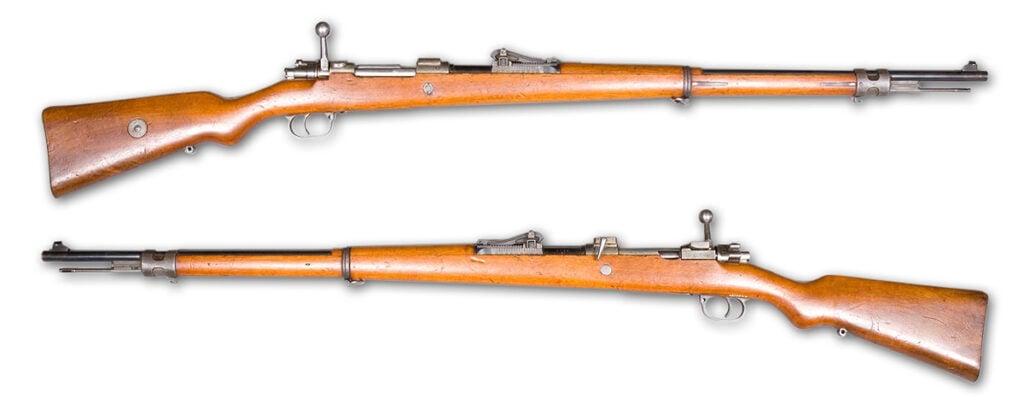
The German troops were taking advantage of that Mauser quality with their main service rifle, the Gewehr 98, thought to be one of the best bolt action rifles of the era. The Gewehr 98’s controlled-feed bolt action combined the best features of other bolt action designs for a simple yet reliable design. The rifle was also impressively accurate.
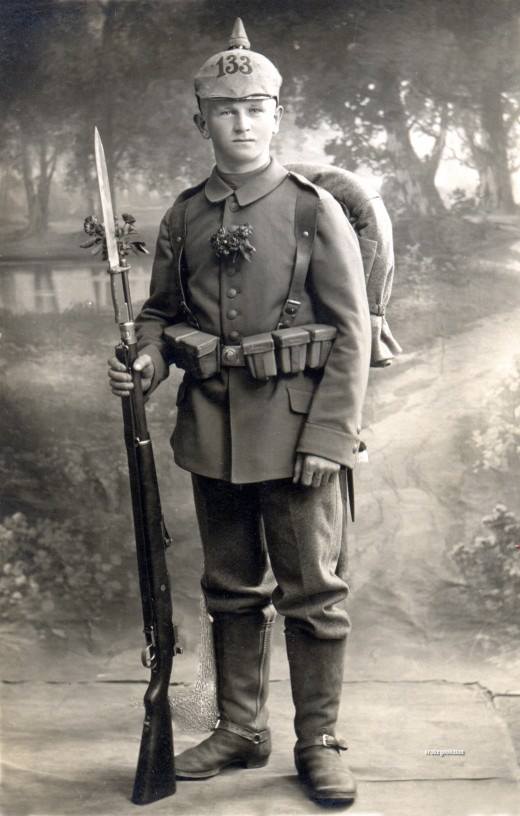
However, the Gewehr 98’s bolt action design was expensive to produce and did not provide the same rate of fire as some other designs, such as that on the Lee-Enfield. At the same time, the Gewehr 98 also could not match the range of the M1903 Springfield. In addition, the Gewehr 98 was longer than either of those two rifles, making it unwieldy in the trenches.
The Germans did learn their lesson, though, and replaced the Gewehr 98 with the similar but shorter Karabiner 98k in 1935.
Mosin-Nagant Model 1891
On the opposite side of the Eastern Front was the Russian Empire using the Mosin-Nagant.
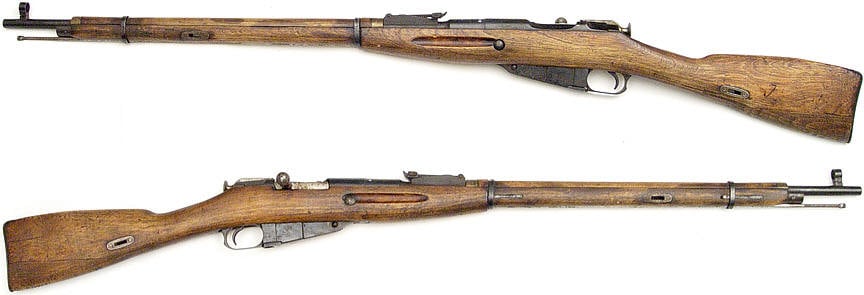
The Mosin-Nagant was one of the most enduring and most mass-produced battle rifles. From 1891 to when production stopped in 1965, approximately 37 million Mosin-Nagants were produced. During World War I, however, there was actually a shortage.
In fact, the Russian government contracted with Remington and the New England Westinghouse Company in 1915 to have 1.5 million and 1.8 million rifles, respectively, produced in the United States. These contracts didn’t solve the problem though.
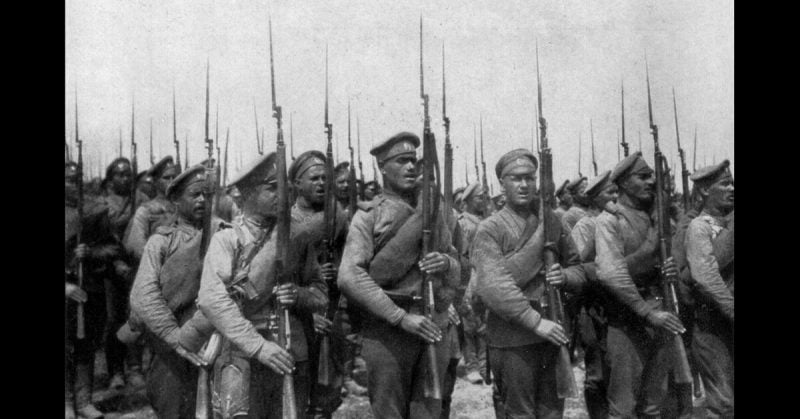
After the Bolshevik Revolution in 1917, Vladimir Lenin canceled payments to the US for the rifles and production stopped. Remington had produced about 750,000 rifles at this point, about 470,000 of which had already been delivered to Russia.

The remaining rifles were purchased by the US Army. Some were given to American and British expeditionary forces in northern Russia, while others were used for Army training or given to the US National Guard, SATC units, and ROTC units.
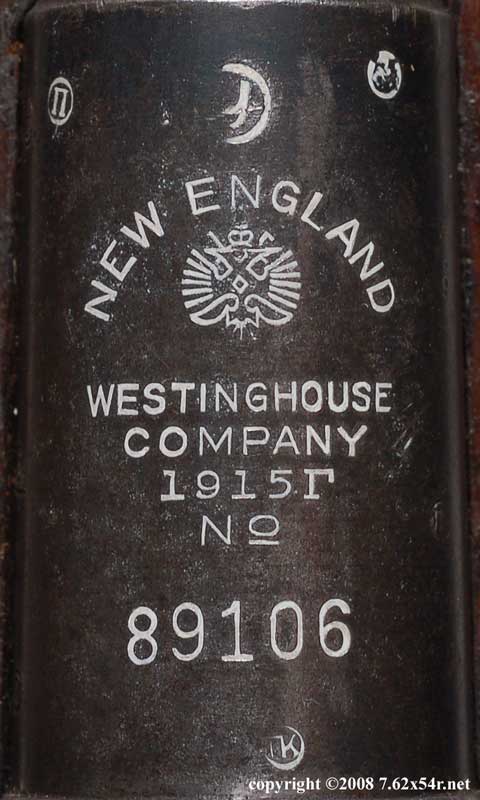
To this day, the Mosin-Nagant is a popular military surplus rifle, in no small part due to the degree of mass production making Mosin-Nagants cheap and easy to find. The American made Mosin-Nagants, however, are very rare and highly prized by collectors.
Machine Guns
Machine guns were one of the most iconic advancements in weapons technology associated with World War I. However, machine guns had actually been around for a while. The Maxim gun, for example, on which many World War I era machine guns were based, had actually been invented by Sir Hiram Maxim decades prior in 1884.
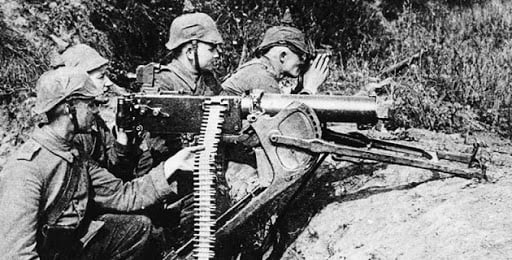
With that said, during World War I, machine guns were especially effective. This is both due to advancements in technology and the style of warfare. Machine guns were a vital defensive weapon for stopping enemy troops from leaving their trenches and moving forward.
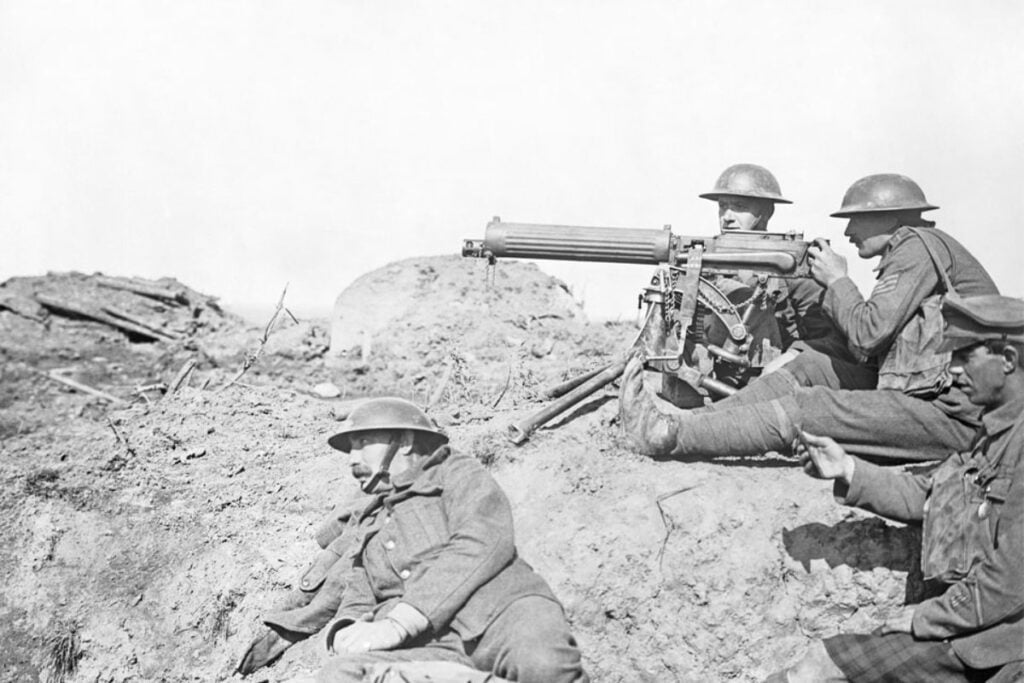
Since both sides had them, though, this led to stalemates along much of the Western Front that would last for years.
Maschinengewehr 08
The standard machine gun for the German side was the Maschinengewehr 08, or MG 08. Like many other machine guns of the era, it was based on that 1884 Maxim gun.
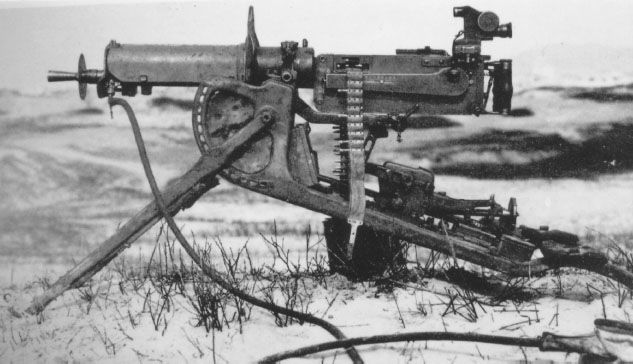
Like the Maxim gun, the MG 08 was water-cooled, plus the Germans added a wooden buttstock. Features like this meant that while the MG 08 was supposed to be a light machine gun, it was still bulky in comparison to those used by the Allies. All in all, the MG 08 weighed about 55 pounds for the gun body and water. The tripod added another 85 pounds.
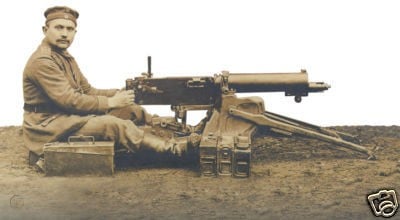
Still, this didn’t stop the MG 08 from being effective. Depending on the lock assembly used, the gun could fire between 450 and 600 rounds per minute.
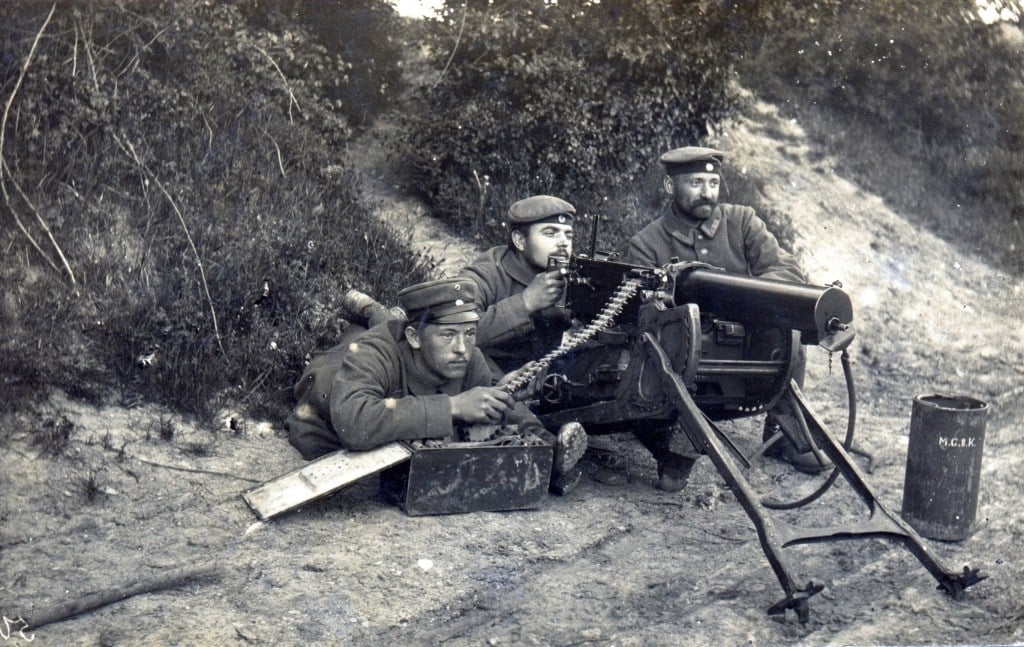
At the Battle of the Somme, the British side lost roughly 21,000 men in just one day, primarily due to this machine gun. The Germans were certainly happy with it: they continued to use it during World War II as well.
Browning M1917
While the Germans were using the MG 08, the Americans were using the M1917 Browning machine gun.
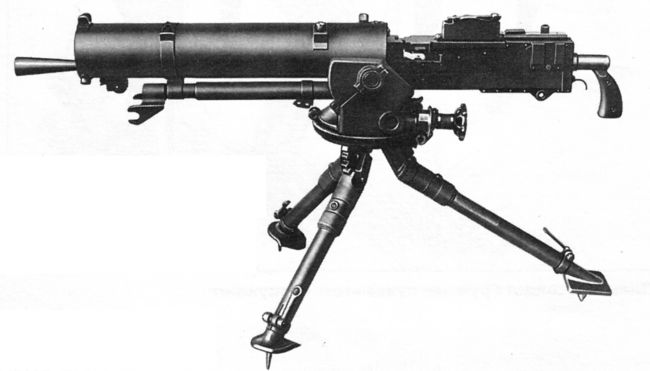
As you can guess by the name, the US was a little late to the party with machine guns and didn’t have a modern one developed until 1917, right around the time of US entry into the war. It would be 1918 before even news of the guns reached the front lines, however.
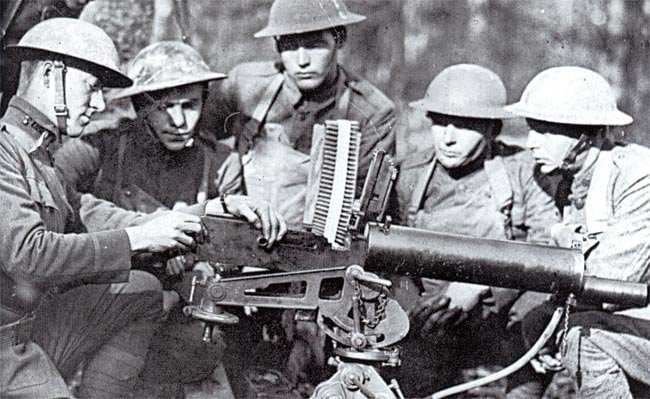
Like the MG 08, the M1917 was water-cooled. However, it was intended to be a heavy machine gun, operated by a crew and frequently mounted to vehicles.
Despite this, it was actually lighter than the MG 08, a little over 100 pounds for the gun, tripod, water, and ammunition. On the other hand, it fired 450 rounds per minute, putting it at a disadvantage to the MG 08.
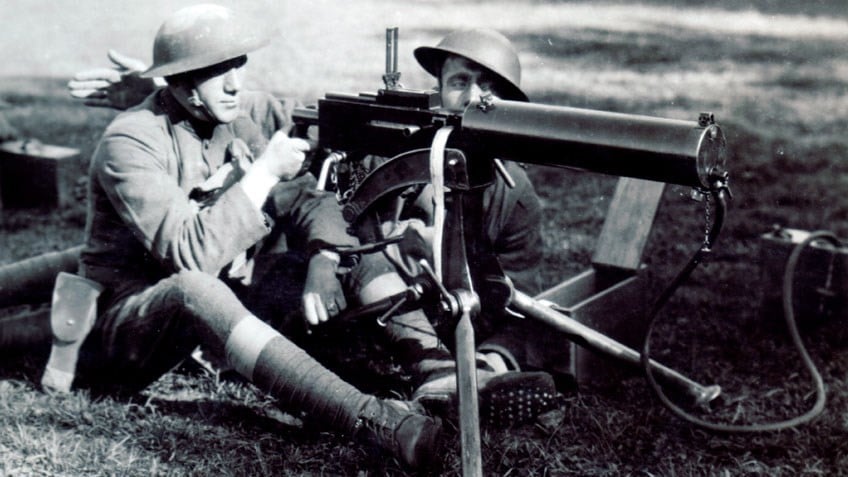
The Browning M1917 was used alongside the lighter M1919 Browning machine gun, which was used at times when the M1917 was too large and heavy to be practical, such as by light infantry.
Lewis Gun
The Lewis Gun was invented by American army colonel Isaac Newton Lewis in 1911. It would famously be used by the British Empire and Commonwealth, but was one of the most used light machine guns of World War I. It was also loved by the Belgians and Russians, and even the Germans, who managed to capture a few.
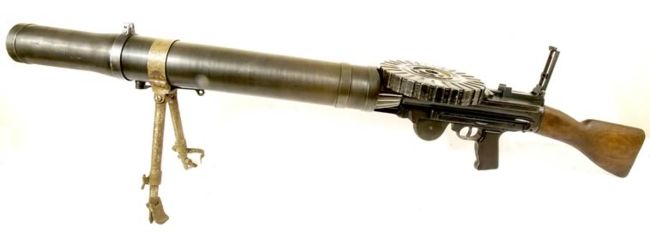
The gun was lightweight compared to other machine guns, just 26 pounds, and was very mobile. It was also highly reliable despite the muddy conditions in the trenches. And to top it off, it fired 500 to 600 rounds per minute, making it a strong competitor for the MG 08.
But despite the nationality and branch of service of the gun’s inventor, the US Army was never interested in adopting it.
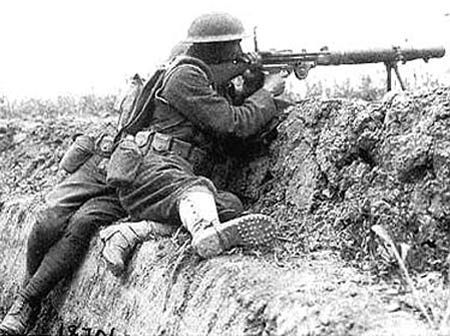
Not only that, but they also so thoroughly opposed it, that they took Lewis guns from US Marines who had them as they arrived in France and replaced them with the Chauchat LMG.
This can be largely attributed to a conflict between Col. Lewis and General William Crozier, who was chief of the Ordnance Department at the time. Fortunately for Lewis, while the Army never adopted his gun, both the Navy and Marine Corps did so in 1917.
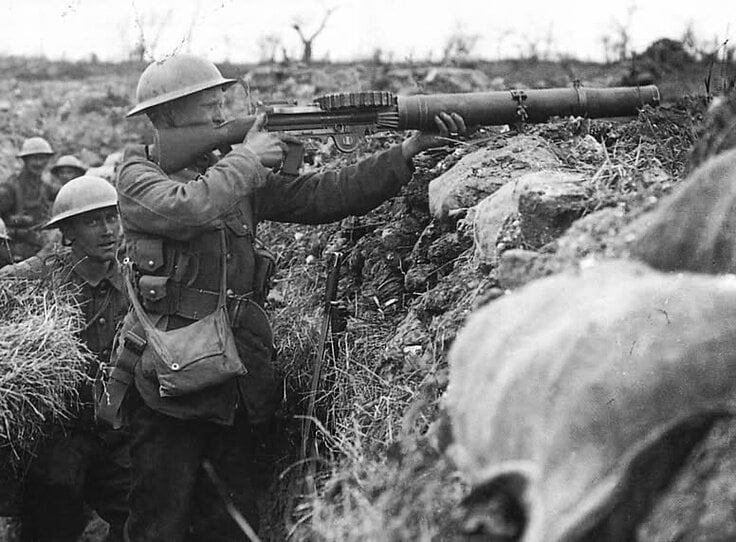
Handguns
Because of the nature of trench warfare, handguns didn’t get a lot of use during World War I. Still, they were issued to those who had to work in cramped spaces, such as tank operators and airmen.
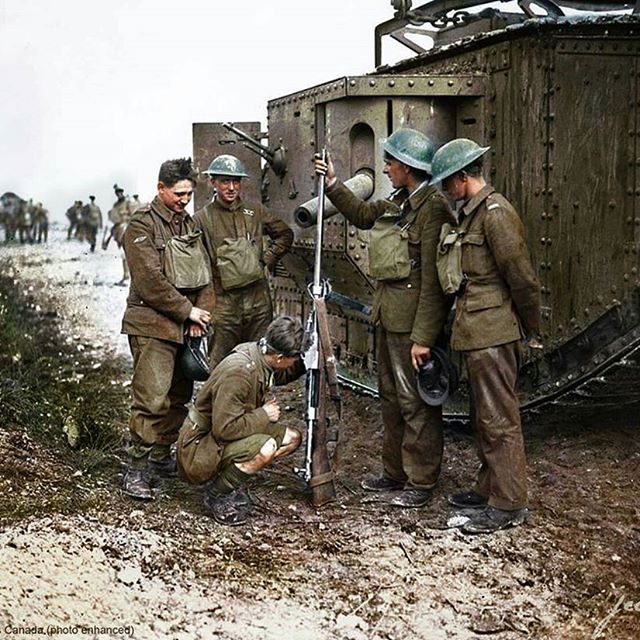
They were also used by so-called “trench sweepers,” men who would rush the enemy trench after their own side made an advance in order to clear out and claim the trench.
Colt M1911
The 1911 has been around for more than a century and is still ridiculously popular. Back during World War I, however, it was still the new kid on the block. Sure, it had been adopted several years prior to US entry in the war, but the war provided the pistol with its first chance to really prove itself.
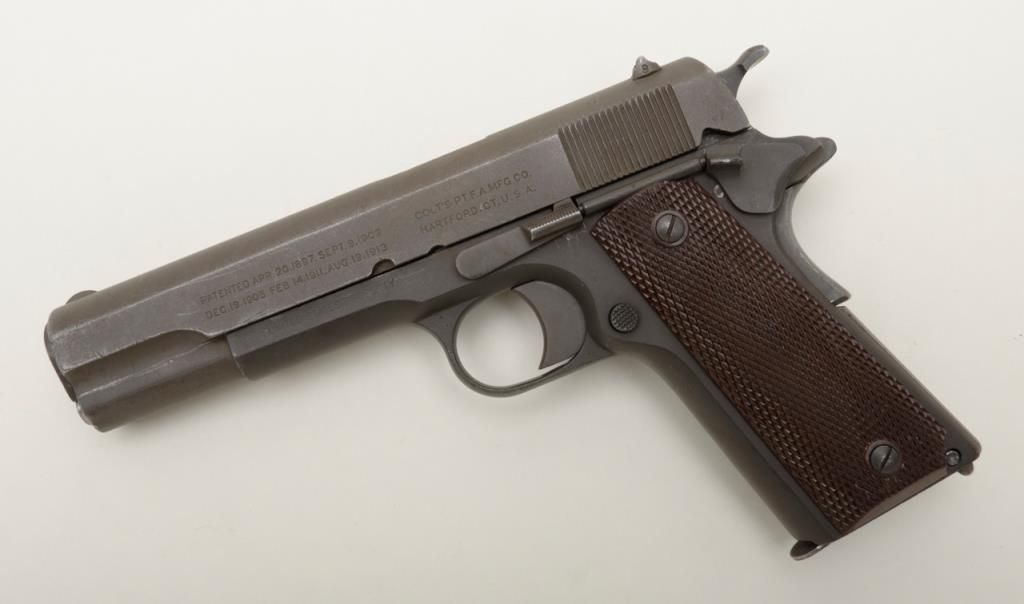
Of course, it didn’t take US entry into the war to get started proving itself. The Colt M1911 was also being used by the British Empire and Commonwealth, the Russian Empire, and France.
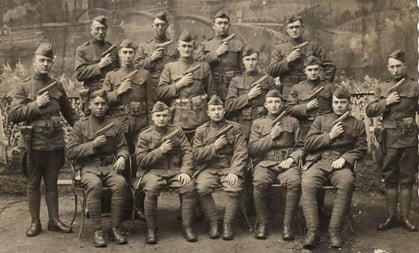
In fact, the demand for the M1911 was so high, especially once the US joined the fight, that the US had to contract with several other US arms manufacturers to ensure enough M1911s were produced.
(Want one? Check out the Best 1911 Pistols for the Money!)
Luger Pistol
Even if you don’t recognize the name of the Luger Pistol (or its other name, Pistole Parabellum), you’ve almost certainly seen it before.
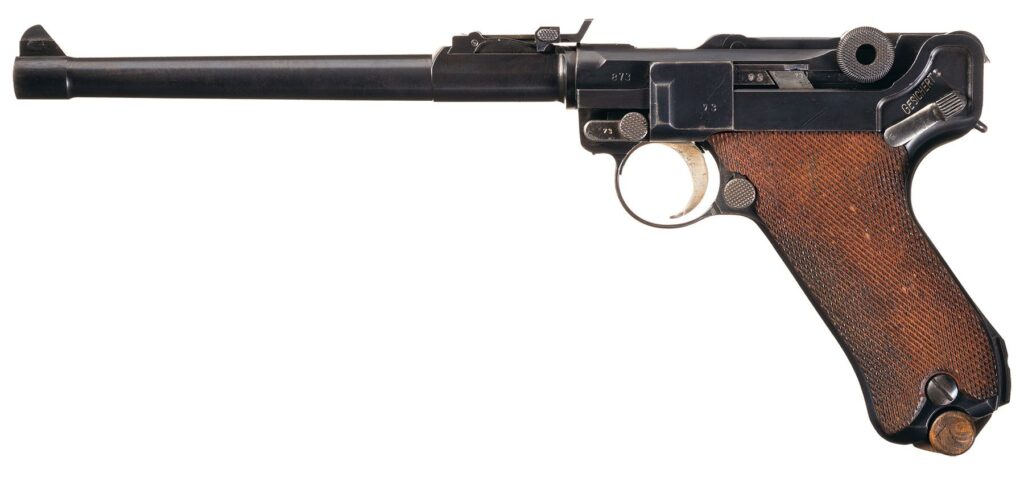
This pistol has become so iconically linked to World War I and World War II-era Germany that just about anytime you see a German with a pistol in a movie or TV show set during that period, they’re carrying a Luger Pistol.
The Luger pistol was first produced in 1898. While it would be most iconically linked to the Germans, it was also used by many other countries. Most notably, the Swiss military actually adopted the Luger before the German military did.
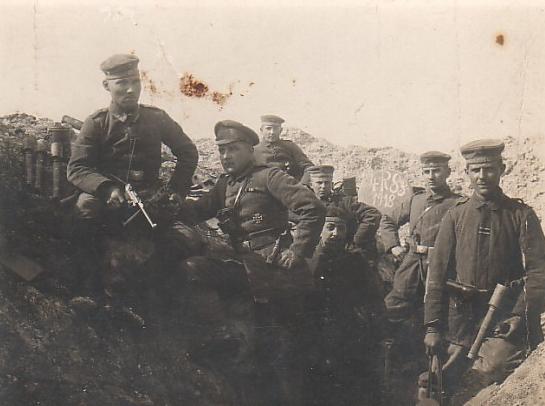
While the Luger pistol itself is no longer in production, the round developed for it is one of the most popular on the market. Both of 9×19’s names, 9mm Luger and 9mm Parabellum, are references to this gun, which gave the round its start.
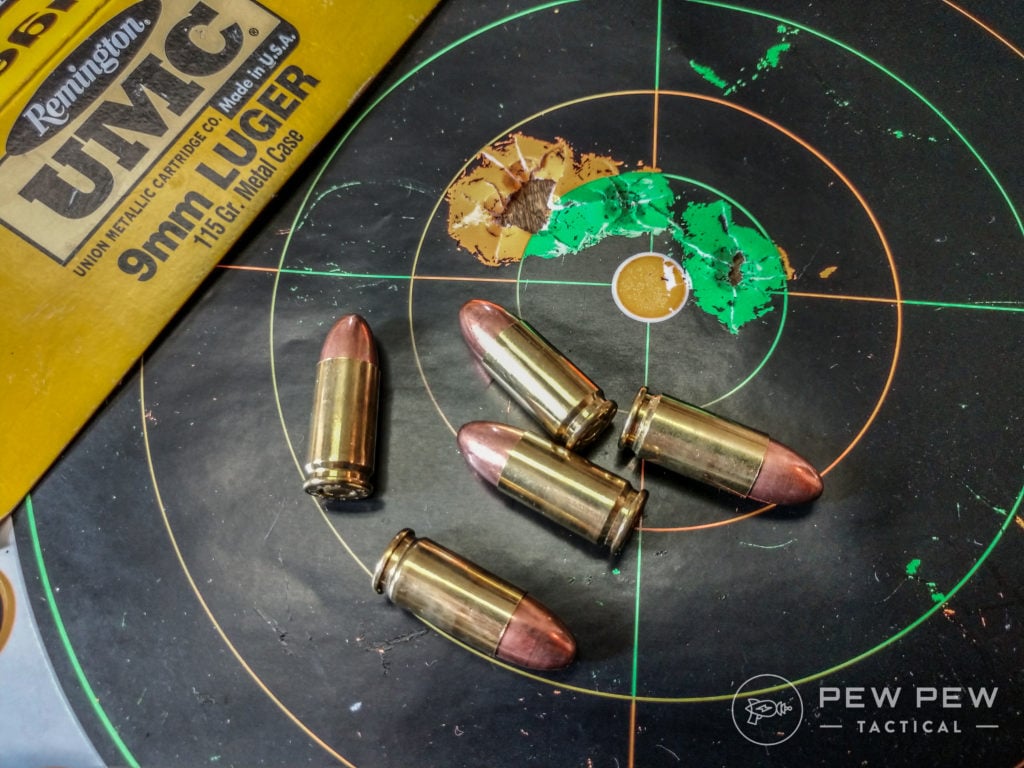
Parting Shots
World War I saw an incredible level of weapons development on all sides, particularly out of the US and Germany. And it wasn’t just that lots of new weapons were being produced: many of these weapons were incredibly effective. For proof, just look at how many would continue to be used during World War II and later conflicts.
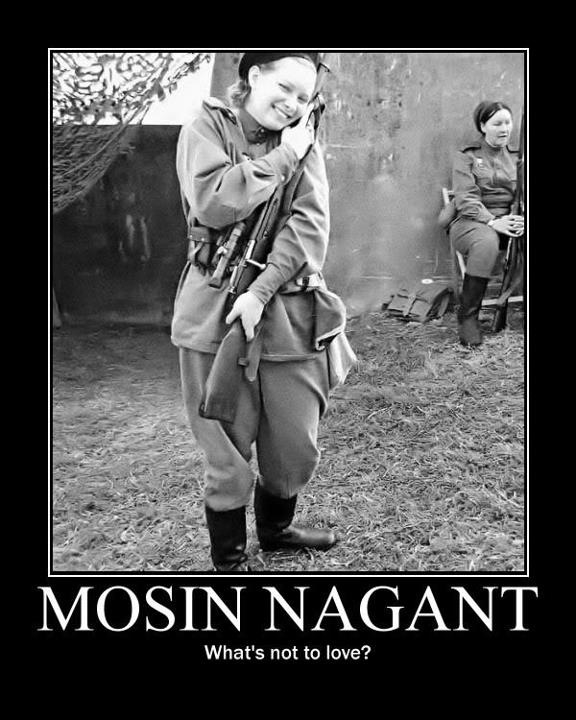
And while I was only able to focus on guns here (and only a few of them at that), this was true about tons of other types of weapons as well, including artillery, submarines, aircraft, tanks, and, perhaps most infamously, chemical weapons.
While you may have already been familiar with a few of the guns I included on this list, I hope I’ve introduced you to at least one or two cool new guns that you weren’t aware of.
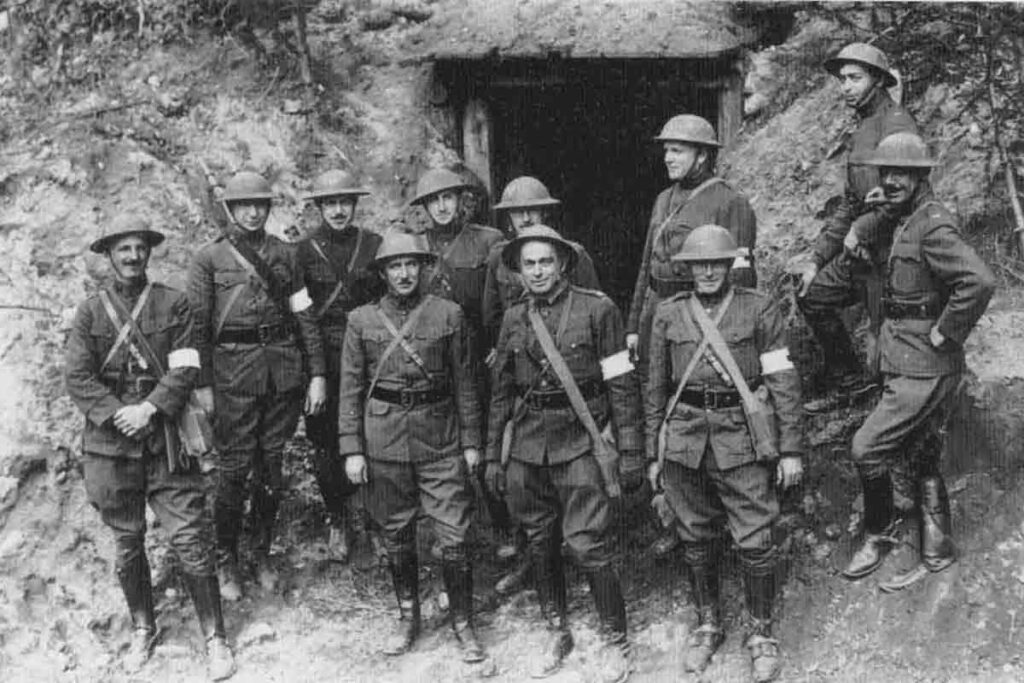
Which of these World War I-era firearms were you already familiar with and which were new to you? Want to learn about some more interesting historical guns? Check out the Best Historical Guns (That You Can Still Buy) and Guns That Changed the World.

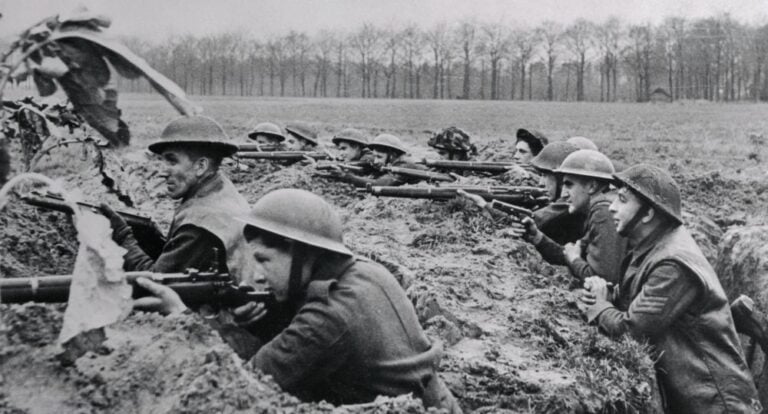
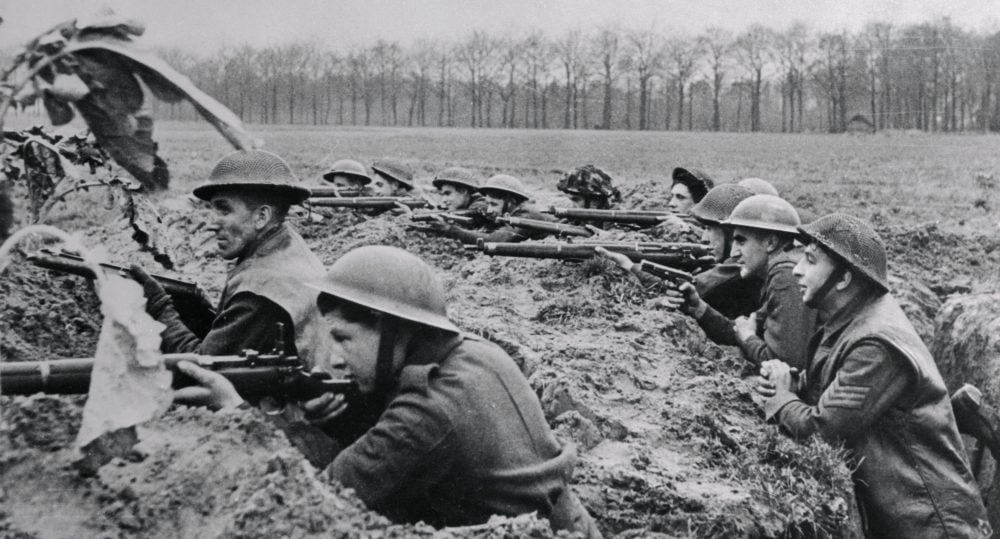







3 Leave a Reply
The most common by a lot US battle rifle in theater were M1917 Enfield's, not Springfield 1903's, the author missed not mentioning this.
Germans had the K98A during WW1. Although the K98k is the more popular because of its use in WW2, the Germans did have at least 2 carbines before it, the A and the B
First picture has a Browning/FN HP in it...